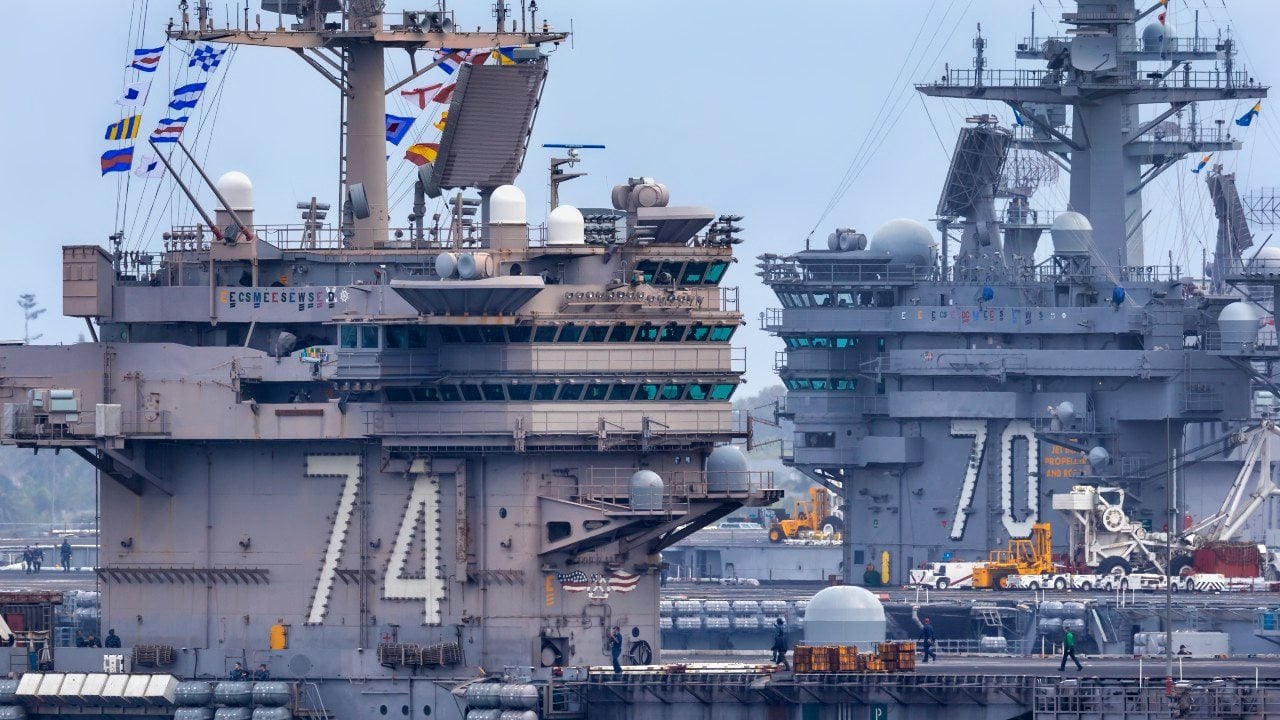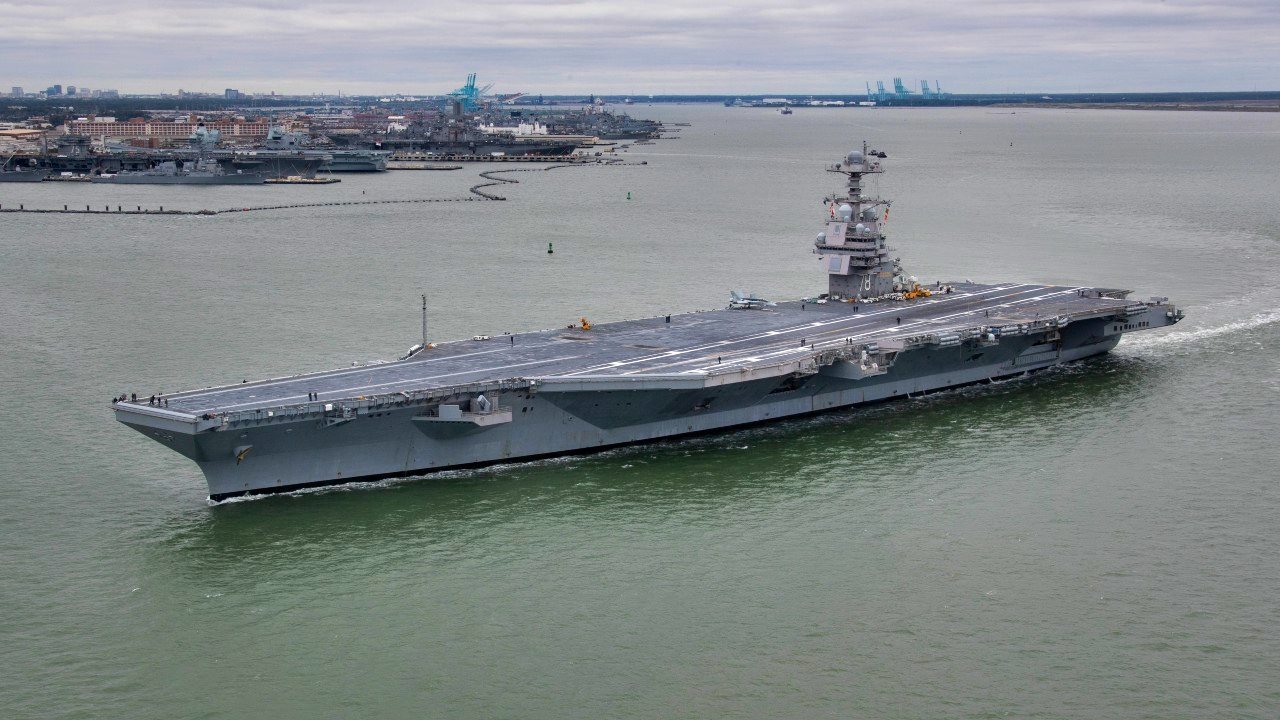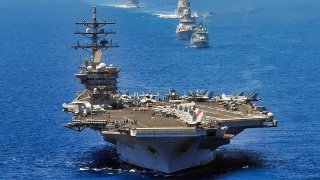Nuclear Aircraft Carriers in the U.S Navy: Most Expensive Warships Ever
Modern aircraft carriers, like the U.S. Navy's Gerald R. Ford-class, cost around $13 billion each due to their immense complexity and advanced technology. These vessels are essentially floating cities, housing up to 5,000 sailors and capable of projecting air power globally.
What You Need to Know: Modern aircraft carriers, like the U.S. Navy's Gerald R. Ford-class, cost around $13 billion each due to their immense complexity and advanced technology. These vessels are essentially floating cities, housing up to 5,000 sailors and capable of projecting air power globally.

-They feature robust steel construction, nuclear reactors for decades-long operation without refueling, and sophisticated systems like the Electromagnetic Aircraft Launch System (EMALS) for smoother and more efficient aircraft launches.
-The aircraft carriers serve as mobile airfields, eliminating the need for foreign bases and providing unparalleled flexibility in military operations. Their high cost reflects the strategic advantage and technological marvel they represent.
Why Aircraft Carriers Cost Billions: Inside the World's Most Advanced Warships
The price of a modern aircraft carrier is astronomical. America’s latest carrier class, the Gerald R. Ford, costs $13 billion per unit. And so far, the entire Ford program has cost taxpayers $120 billion. That’s a lot to pay for a boat. But, of course, the modern aircraft carrier isn’t exactly just a boat; a modern aircraft carrier is a floating city with a variety of complicated subsystems, capable of projecting air power around the globe.
Navy Aircraft Carriers: You Get What You Pay For
Aircraft carriers confer a measure of prestige upon the owner. Like a Ferrari or a McLaren, that only a very few can afford. Most nations are priced out of owning an aircraft carrier. Many of the Earth’s nations don’t have an annual GDP higher than the price of one Ford-class carrier. But a Ferrari or a McLaren can’t do much other than get the driver from point A to point B – which can be accomplished as readily in a Hyundai or a Ford. Owning an aircraft carrier unlocks unique abilities that cannot be accomplished with a battleship or a destroyer. An aircraft carrier ferries and launches aircraft, in effect serving as a mobile airfield – an invaluable tool for projecting power on distant shores.

The primary alternative to launching aircraft from distant lands is to possess airfields on foreign soil. Again, most nations are without an airfield on foreign soil. And again, the U.S. is an exception – with a vast network of foreign military installations. Still, foreign military installations are fixed and inflexible – invaluable in a fixed conflict, with defined boundaries. But in enforcing a foreign policy that calls for such diverse and sometimes whimsical power projection needs; an aircraft carrier comes in handy.
Loaded With Novel Technology
To say that an aircraft carrier is a floating city is not an exaggeration. An aircraft carrier hosts upwards of 5,000 sailors at a time. So, the aircraft carrier must be equipped to house, and feed, and clean, and entertain those 5,000 sailors. Accordingly, an aircraft carrier is equipped with multiple galleys and mess halls. An aircraft carrier needs to be able to provide as many as 18,000 meals per day. Now, providing meals isn’t necessarily a novel technology. But the meal service speaks to the scope and complexity of running – and paying for – a modern aircraft carrier.
All the meals and all the sailors are really about one thing: projecting air power. The entire city/aircraft carrier exists to project air power. And to project air power the aircraft carrier features a unique structure and a unique series of systems.
To support flight operations, the hull of an aircraft carrier “is made up of extremely strong steel plates, measuring several inches thick,” How Stuff Works reports. “This heavy body is highly effective protection against fire and battle damage.”
For structural support (and again, to support flight operations), the aircraft carrier is made of “three horizontal structures extending across the entire hull: the keel (the iron backbone on the bottom of the ship), the flight deck and the hangar deck.” The hangar deck is where aircraft are stored. The flight deck is where aircraft are launched from. So, the entire structure of the boat is built around storing and launching aircraft.
“The hull portion below the water line is rounded and relatively narrow, while the section above water flares out to form the wide flight-deck space,” How Stuff Works explains. “The lower section of the ship has a double bottom, which is pretty much what it sounds like – there are two layers of steel plating: the bottom plating of the ship and another layer above it … the double bottom provides extra protection from torpedoes or accidents at sea.”
To launch aircraft, aircraft carriers use catapults, which pull an aircraft across the flight deck and launch the aircraft from the front of the boat. Traditionally, aircraft carriers used steam-powered catapults. Still-serving Nimitz-class carriers still rely on steam catapults. But the cutting-edge Ford-class uses a newly developed Electromagnetic Aircraft Launch System (EMALS). The EMALS uses a linear induction motor, that generates electric currents to create magnetic fields. The magnetic fields pull the aircraft along the deck. The EMALS (which was expensive to research and develop) is expected to accelerate aircraft more smoothly than the now-outdated steam catapults.
Launching aircraft is one function of an aircraft carrier. Landing aircraft is another. Aircraft land on aircraft carriers with a tailhook, which catches wires laid down along the flight deck. It’s a relatively low-tech system that proves effective.
And powering the whole affair is a nuclear reactor. The benefit of a nuclear reactor is that it allows the aircraft carrier to operate indefinitely – for decades if needed – without needing to refuel.
In short, aircraft carriers are expensive because they are technological marvels.
About the Author: Harrison Kass
Harrison Kass is a defense and national security writer with over 1,000 total pieces on issues involving global affairs. An attorney, pilot, guitarist, and minor pro hockey player, Harrison joined the US Air Force as a Pilot Trainee but was medically discharged. Harrison holds a BA from Lake Forest College, a JD from the University of Oregon, and an MA from New York University.
All images are Creative Commons.


